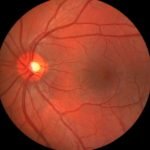Dermal Absorption of Essential Oils
Timothy Miller, ND, RA
For one reason or another, many of us have applied essential oils topically, either neat (undiluted) or as a blend in a carrier. The integumentary system is designed as a selectively permeable barrier to protect the human organism from its external environment.1,2 The inherent nature of the skin raises some curious questions with regards to essential oil applications, including: “How do essential oils pass through the skin?”… “How readily do they absorb?”… “Do essential oil constituents reach the bloodstream? If so, how much? Enough to elicit systemic therapeutic effects?”… and “Is there a way to increase penetration through and absorption into the various layers of the skin?” Scientific literature is offering great insight into these questions.
Basic Anatomy 101: The Integument
First, we must revisit basic anatomy and the layers of the skin. The outermost layer of the skin is the epidermis, which is comprised of 4 to 5 layers (depending on the location in the body). You may remember the mnemonic “Come, Let’s Get Sun Burned” or a similar tool to recall the layers from most superficial to deep: stratum Corneum, stratum Lucidum (palms and soles only), stratum Granulosum, stratum Spinosum, and stratum Basale. As cells mature, they progress from the stratum basale, out toward the stratum corneum.2 By the time they reach the stratum corneum, they have become anucleated and highly keratinized. The highly keratinized nature of the stratum corneum renders it a highly effective protective barrier, especially from transepidermal water loss.1
The innermost layer of the skin is called the dermis. It consists of connective tissue, nerve endings, blood vessels, lymphatic vessels, sweat glands, sebaceous glands, and hair follicles. For the purposes of transdermal absorption, the dermis provides minimal interference. The most significant barrier of transdermal absorption is the epidermis.3 By the time a transdermal agent has passed through the epidermis and reached the dermis, it has now gained easy access to blood vessels for systemic circulation.2
Routes of Transdermal Absorption
There are 3 mechanisms for transdermal delivery: the intracellular route, the intercellular route, and the shunt route. The intracellular route is where molecules pass directly into the corneocyte (cells of the stratum corneum), and continue inward, passing into and out of corneocytes along the way, whereas, in the intercellular route, molecules are penetrating into the layers of the skin through the tiny spaces in between cells. The shunt route is a clever bypass system in which molecules do not directly pass through the corneocytes or the spaces in between them; instead, they pass through structures that originate in the dermis and span the entire height of the epidermis. Such structures include sweat glands, sebaceous glands, and hair follicles. By disrupting the keratin-rich epidermal layers, these structures allow for a significantly greater relative dermal absorption of molecules. As such, areas on the body that are plentiful in sweat glands, sebaceous glands, and hair follicles (ie, scalp, face) are great locations for absorption.4,5
Depending on the chemical nature of the transdermal agent (ie, its molecular size, polarity), the path(s) that the agent uses and its degree of penetration are determined.
Essential Oils: The Lipid-Lovers
As their name would imply, essential oil constituents are lipophilic (“fat-loving,” or fat-soluble). This suggests that essential oils mix well with oils, and poorly with water. As discussed previously, the keratinized nature of the epidermis is primarily designed to prevent desiccation; thus, the skin is a relatively lipophilic/hydrophobic barrier. Since both essential oils and the epidermis are relatively lipophilic, they “mix” relatively well together; consequently, essential oils have a greater tendency for transdermal absorption.
Factors Influencing Transdermal Absorption of Essential Oils
Many factors affect transdermal absorption rate and amount. Included among them are surface area of the application, location of the skin application, exposure time, use of an occlusion technique, and temperature.1,2,4-6
Certain factors, as a general rule, have specific effects on transdermal absorption (Table 1).
Table 1. Factors Affecting Transdermal Absorption
| Factor | Effect on Absorption |
| ↑ Surface Area of Application | ↑ Absorption |
| ↑ Exposure Time | ↑ Absorption |
| ↑ Occlusion | ↑ Absorption |
| ↑ Temperature | ↑ Absorption |
Regarding location of the skin application, areas with the thinnest epidermal layers, and areas rich in sebaceous glands, sweat glands, and hair follicles, prove to be the best areas of transdermal absorption. These locations include face, neck, scalp, and wrist.4,5
From Skin to Blood
Research suggests that essential oil constituents are found in traceable amounts in the bloodstream following topical applications. One study conducted with lavender essential oil tested for linalool and linalyl acetate (the 2 major constituents of lavender essential oil) in the blood following a gentle abdominal massage with a 2% lavender/98% peanut oil blend. Amounts of both constituents were identified 15 minutes after the beginning of the massage, with the peak occurring around 30 minutes. The study also calculated their half-lives: 13.76 minutes for linalool and 14.30 minutes for linalyl acetate. This demonstrates that these essential oil constituents do not remain in the bloodstream for long, and are readily metabolized by the body.7
Conclusion
Their lipophilic nature and small molecular size makes essential oil constituents great candidates for dermal absorption. In fact, these fragrant molecules are able to enter the bloodstream through such topical applications in quantifiable ways.7 Many factors influence transdermal absorption. By understanding the science of essential oils and the physiology of the body, we can target our therapies and maximize our aromatherapeutic effects.
 Timothy Miller ND, RA, is a naturopathic doctor and registered aromatherapist. His efforts lie in spearheading clinical aromatherapy instruction. Dr Miller believes in dynamic and engaging teaching techniques while focusing on interesting and clinically-relevant material. The webinar-based series “Clinical Aromatherapy for Medical Professionals” can be found online at www.ncnm.edu/ce. Coursework has been pre-approved for continuing education through the Oregon Board of Naturopathic Medicine.
Timothy Miller ND, RA, is a naturopathic doctor and registered aromatherapist. His efforts lie in spearheading clinical aromatherapy instruction. Dr Miller believes in dynamic and engaging teaching techniques while focusing on interesting and clinically-relevant material. The webinar-based series “Clinical Aromatherapy for Medical Professionals” can be found online at www.ncnm.edu/ce. Coursework has been pre-approved for continuing education through the Oregon Board of Naturopathic Medicine.
References:
- Menon GK, Cleary GW, Lane ME. The structure and function of the stratum corneum. International Journal of Pharmaceutics. 2012;435(1):3-9.
- Graham-Brown R, Burns T. Lecture Notes: Dermatology. 9th ed. Oxford, England: Wiley-Blackwell; 2007.
- Andrews SN, Jeong E, Prausnitz MR. Transdermal delivery of molecules is limited by full epidermis, not just stratum corneum. Pharm Res. 2013;30(4):1099-1109.
- Mohammed D, Matts P, Hadgraft J, Lane M. Variation of stratum corneum biophysical and molecular properties with anatomic site. AAPS Journal. 2012;14(4):806-812.
- Rougier A, Lotte C, Corcuff P, Maibach H. Relationship between skin permeability and corneocyte size according to anatomic site, age and sex in man. J Soc Cosmet Chem. 1988;39(1):15-26.
- Berthaud F, Narancic S, Boncheva M. In vitro skin penetration of fragrances: Trapping the evaporated material can enhance the dermal absorption of volatile chemicals. Toxicol in Vitro. 2011;25(7):1399-1405.
- Jager W, Buchbauer G, Jirovetz L, Fritzer M. Percutaneous absorption of lavender oil from a massage oil. J Soc Cosmet Chem. 1992;43(1):49-54.










